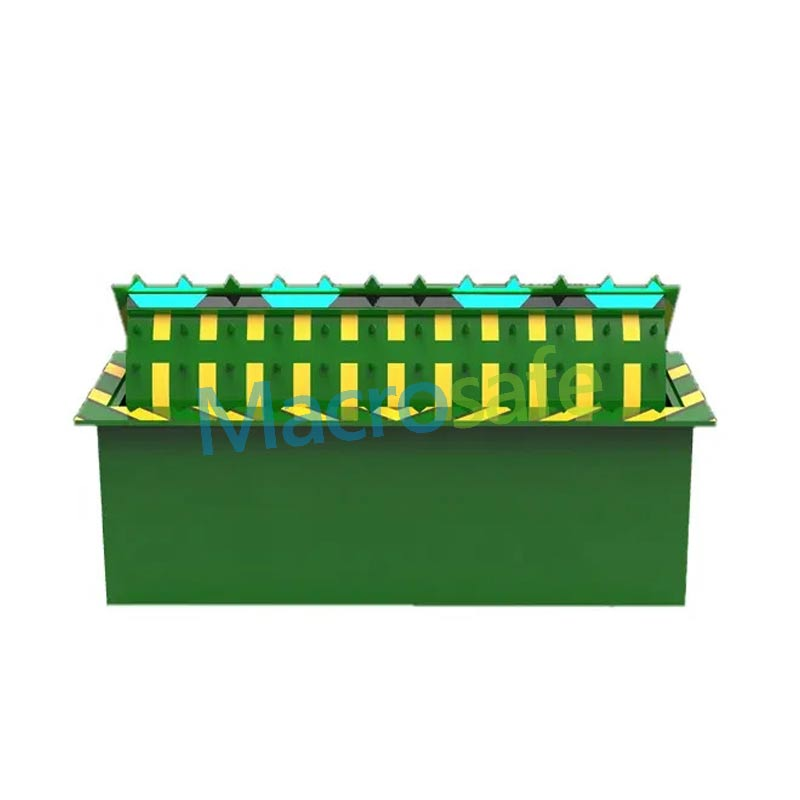Hydraulic roadblockers have emerged as effective security solutions for businesses and organizations, providing enhanced access control and protection against unauthorized vehicular threats. However, before implementing such systems, conducting a cost-benefit analysis is essential. This article explores the key factors involved in the cost-benefit analysis of hydraulic roadblockers, enabling businesses and organizations to make informed decisions regarding their deployment.
-
Initial Investment Costs
The cost-benefit analysis begins with assessing the initial investment required for deploying hydraulic roadblockers. This includes the purchase and installation costs, along with any necessary site preparation. Factors such as the number of roadblockers needed, site characteristics, and customized requirements may influence these costs. Understanding the initial investment is crucial for assessing the feasibility of deploying roadblockers within budgetary constraints.
-
Maintenance and Operational Costs
In addition to the initial investment, ongoing maintenance and operational costs must be considered. Maintenance costs typically include routine inspections, lubrication, and potential repairs. Organizations must also allocate resources for regular operational testing and staff training. Calculating these ongoing costs allows businesses to estimate the total cost of ownership and evaluate the long-term financial commitment associated with hydraulic roadblockers.
-
Security Enhancement and Risk Mitigation
One of the primary benefits of hydraulic roadblockers is the enhanced security they provide. Assessing the potential risks and vulnerabilities of a business or organization’s premises is essential for determining the value of deploying roadblockers. Identifying the potential threats and estimating the potential losses—both financial and reputational—helps quantify the benefits and the contribution of hydraulic roadblockers in mitigating these risks.
-
Return on Investment (ROI)
Evaluating the return on investment is a vital aspect of the cost-benefit analysis. By comparing the total costs of deployment and maintenance with the expected benefits, organizations can determine the financial impact of implementing hydraulic roadblockers. Calculating the ROI considers factors such as reduced security incidents, potential insurance premium reductions, and the intangible value of peace of mind. This analysis allows businesses to make informed decisions based on their financial objectives.
-
Operational Efficiency and Productivity
Hydraulic roadblocker can contribute to operational efficiency and productivity gains. By effectively managing access control, roadblockers minimize unauthorized entry, reducing the risk of interruptions or disruptions. Streamlined entry and exit processes improve the flow of authorized vehicles, saving time and optimizing operational productivity. Considering the potential efficiency gains in terms of cost savings or increased productivity further strengthens the overall cost-benefit analysis.
-
Regulatory Compliance and Legal Costs
Complying with regulations and legal requirements is a critical consideration for businesses and organizations. Deploying hydraulic roadblockers can help meet security standards and legal obligations necessary for specific industries or jurisdictions. Avoiding potential legal consequences arising from security breaches or non-compliance can result in significant cost savings. It is important to consider the potential legal costs associated with non-compliance when conducting a cost-benefit analysis.
-
Flexibility and Scalability
Hydraulic roadblocker offer flexibility and scalability, allowing organizations to adapt their security measures to changing needs. These systems can be integrated with various access control technologies, enabling compatibility with different vehicles and security protocols. The flexibility to upgrade or expand the system as the organization grows or security requirements change provides organizations with a long-term investment that offers value beyond the initial deployment.
Conclusion
Conducting a cost-benefit analysis is crucial when considering the deployment of hydraulic roadblockers for businesses and organizations. Considering factors such as the initial investment costs, ongoing maintenance and operational costs, security enhancement and risk mitigation, return on investment, operational efficiency and productivity gains, regulatory compliance, and flexibility and scalability provide a comprehensive understanding of the potential benefits and financial implications. A well-informed cost-benefit analysis empowers businesses and organizations to make sound decisions, ensuring the effective utilization of hydraulic roadblockers as an integral component of their security infrastructure.



